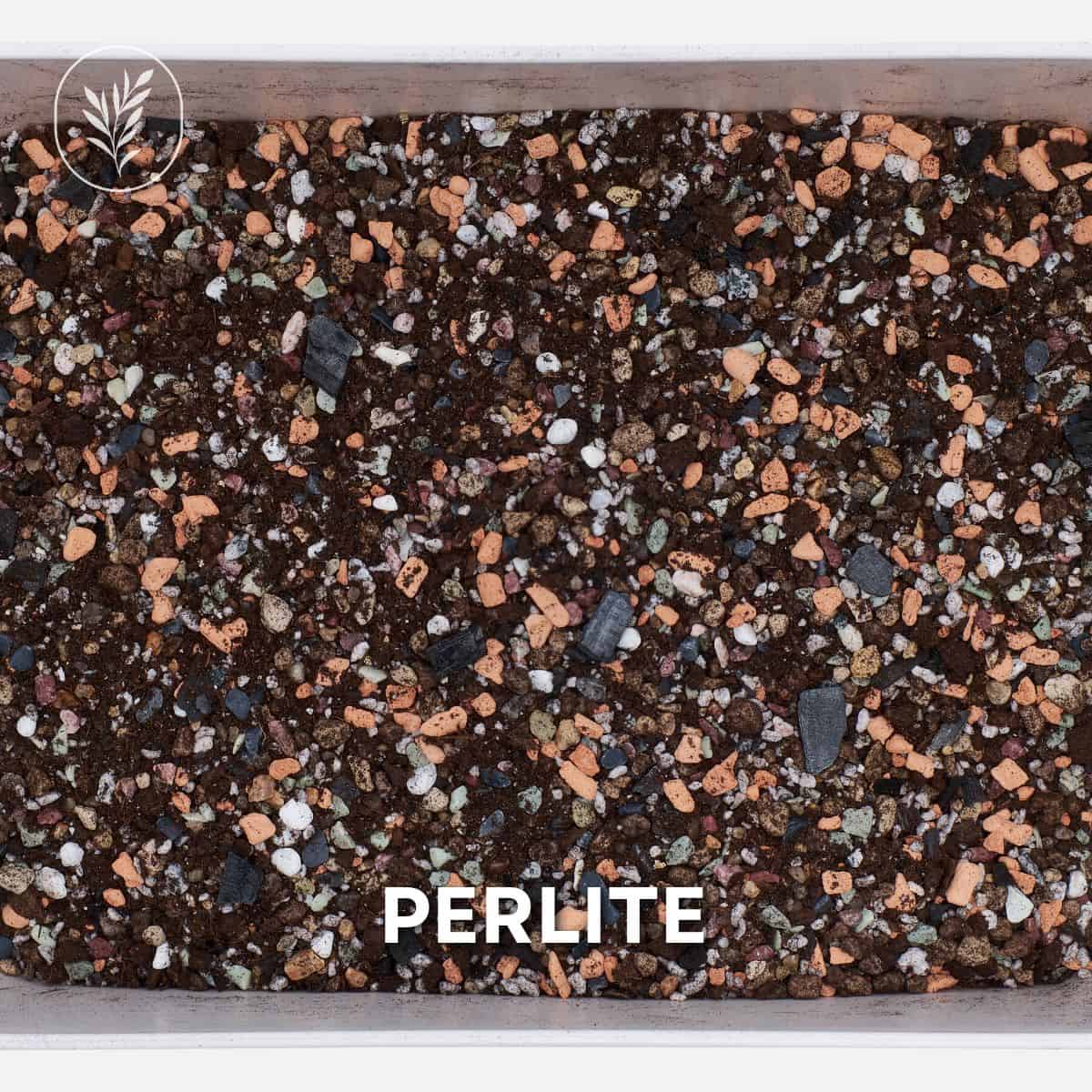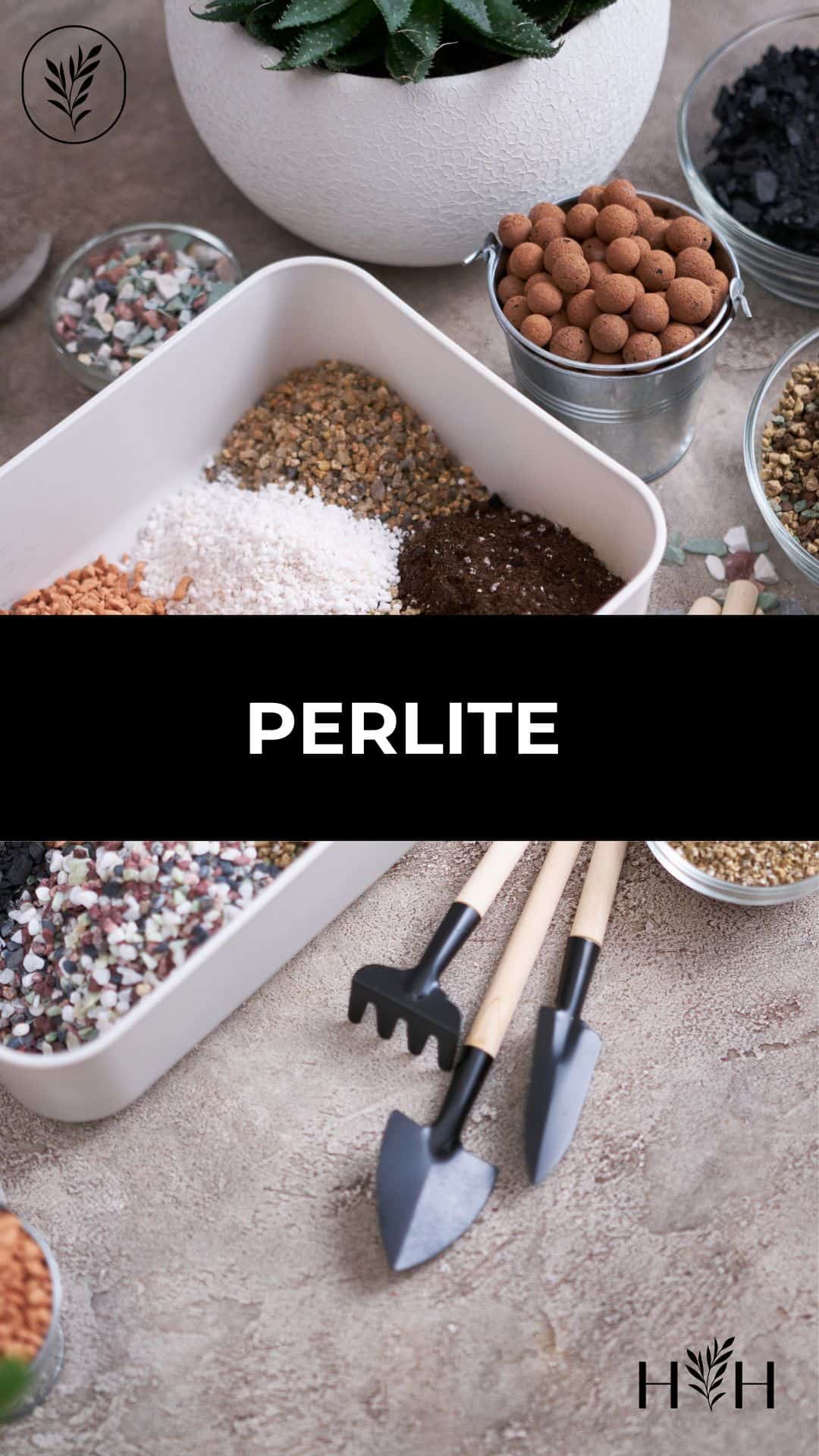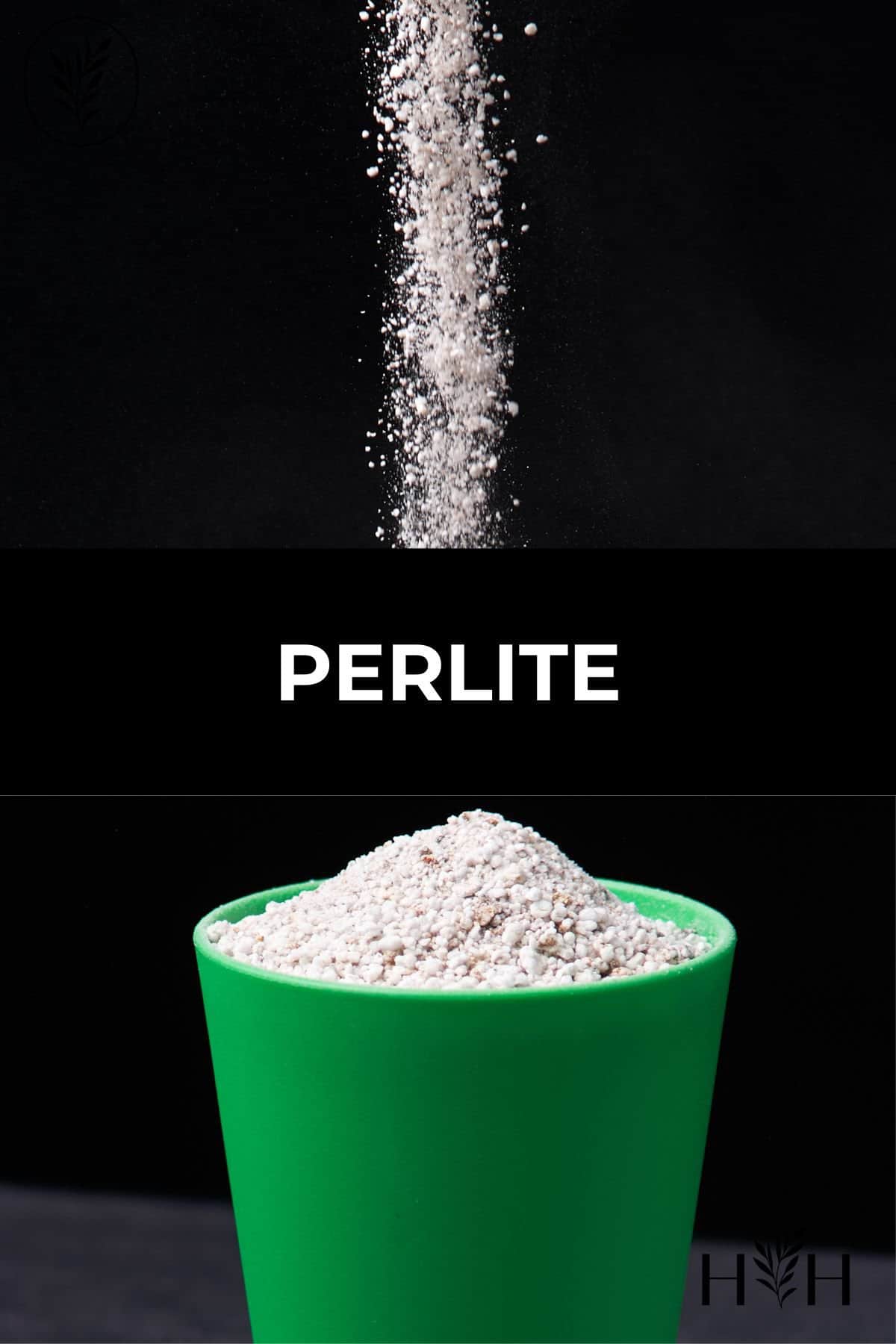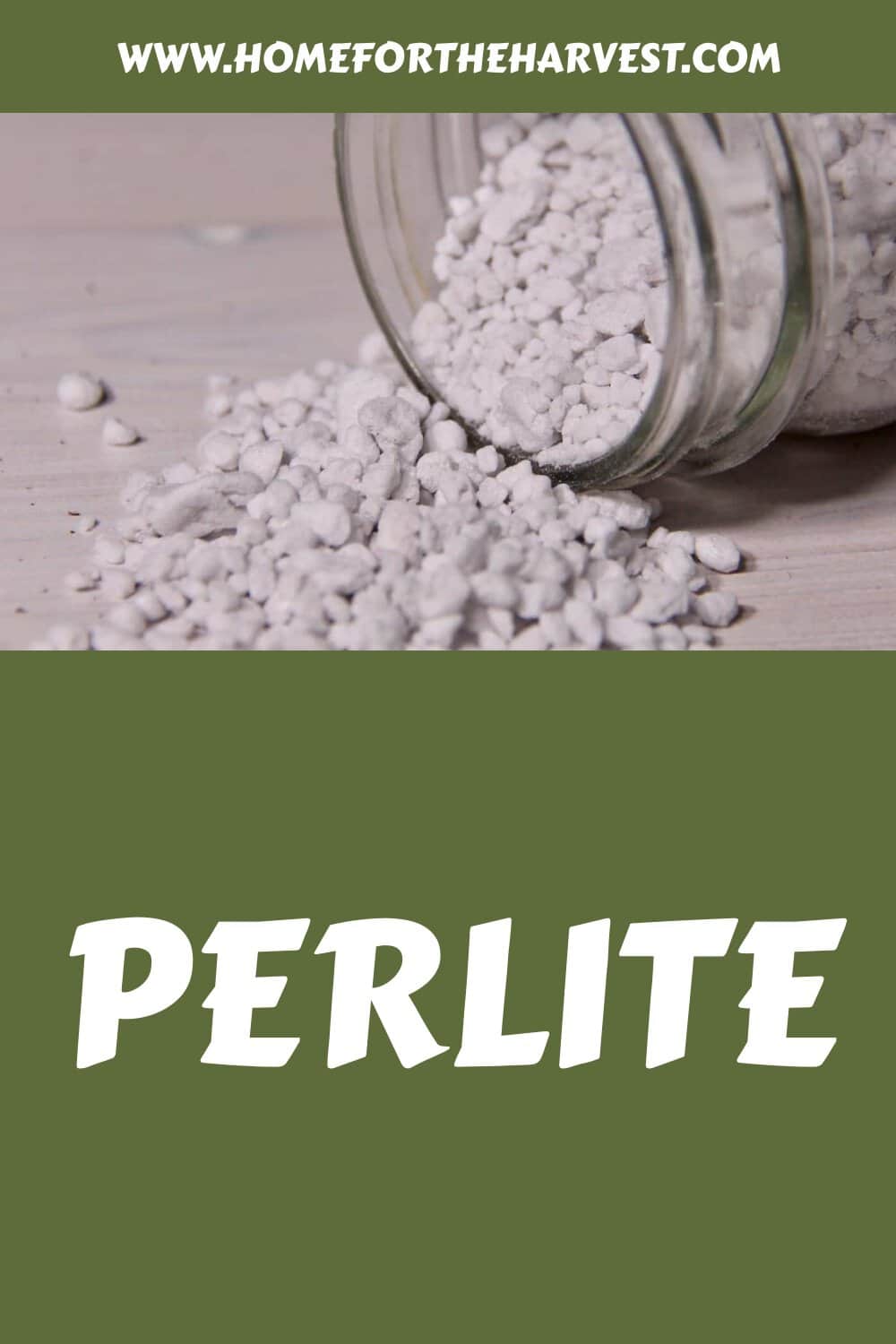Perlite is a manufactured granular product made from naturally occurring volcanic glass that is used in potting mix and also in industrial applications.
In other words, Perlite is rock popcorn or steam-expanded rock foam. These little white lumps are lightweight soil additives that help provide plant roots with the air pockets and drainage pathways they depend on to thrive. And best of all, Perlite is safe for organic gardening!
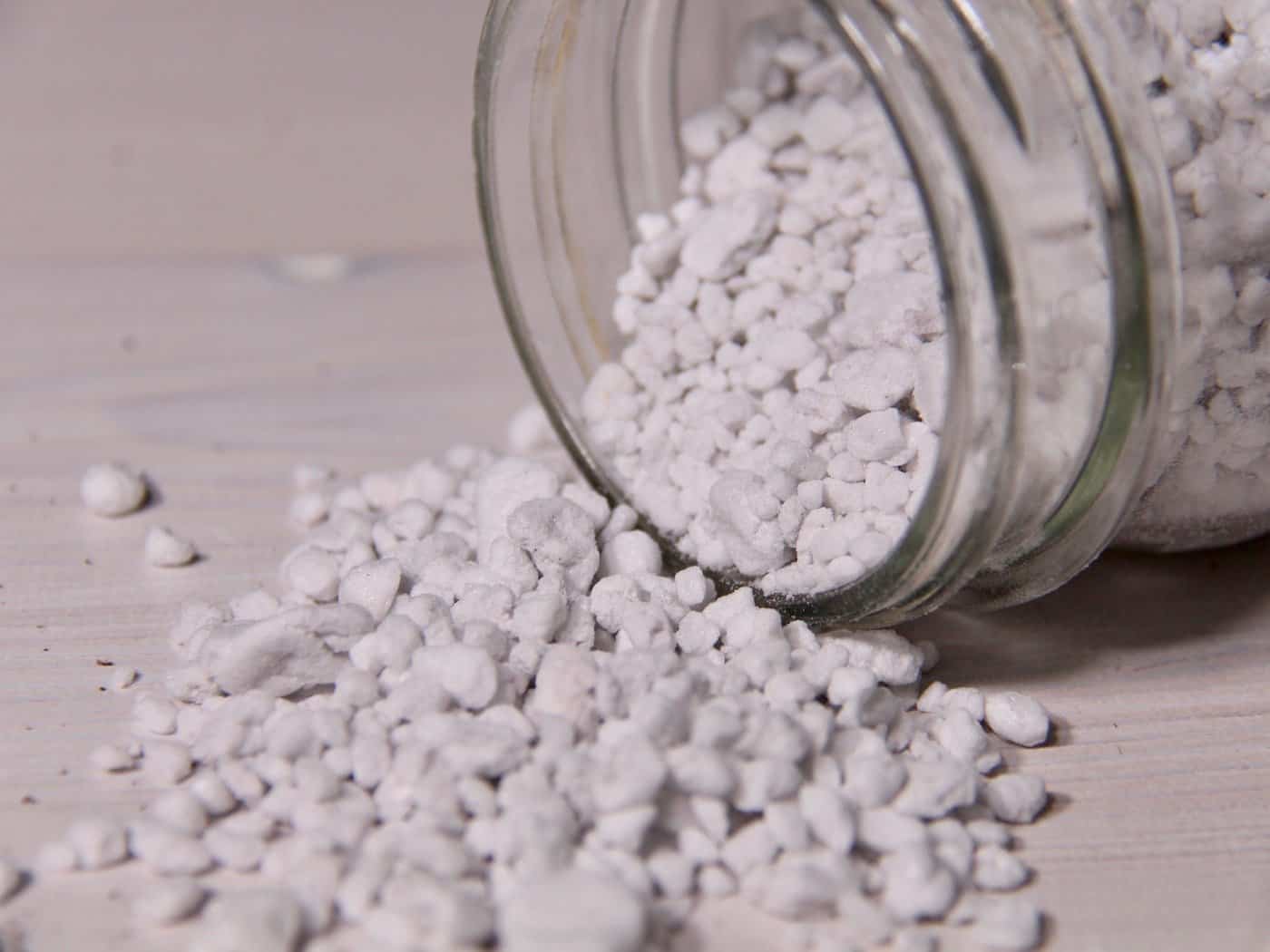
Perlite Rock Formation in Nature
Perlite has its origins as molten lava, which cooled rapidly into an amorphous volcanic glass. Amorphous is a geology term that means the rock has no defined form (in contrast to the very-organized crystalline atomic structure of minerals). With volcanic glass, the lava reaches the earth’s surface and cools too quickly to form crystals. The resulting bedrock is a happy, continuous lump of glass, called Obsidian.
“In order for perlite to form, the necessary precursor, obsidian, has to be present.”
Perlite mining and reclamation in the No Agua Peaks, Taos County, New Mexico, by David J Ennis, New Mexico Geological Society
These volcanic rock deposits have characteristic cracks, likened to an “onion skin” (kind of like antique glass). Water can work its way into the rock, causing a type of chemical weathering. The shiny, translucent surface of the obsidian weathers into the matte, pearly surface of perlite. This water-based weathering is how obsidian deposits form into crude perlite.
Perlite is made mainly of silica, as well as other less-prevalent substances and water. Mining of this extrusive igneous rock is generally done in open pit mines using mechanical extraction or blasting programs.
“The United States is one of the world’s largest producers and consumers of crude perlite and expanded perlite. A number of western states including Utah and Oregon produce perlite, with New Mexico being the most important perlite-producing state. Other countries that produce large amounts of crude and expanded perlite include China, Greece, Italy, Philippines, Mexico and Turkey.”
Perlite, Minerals Education Commission Minerals Database
Crude perlite rocks look like chunks of black glass. They have a bit of a pearl-like shine to them (the source of the name Perlite). While perlite is not technically a true geologic “mineral”, as it is not crystalline, it is generally viewed by gardeners as part of the mineral component of garden soil. For simplicity’s sake, even geologists will sometimes classify it as mineral-like or mineraloid. Not ALL rocks are minerals *shrug*…
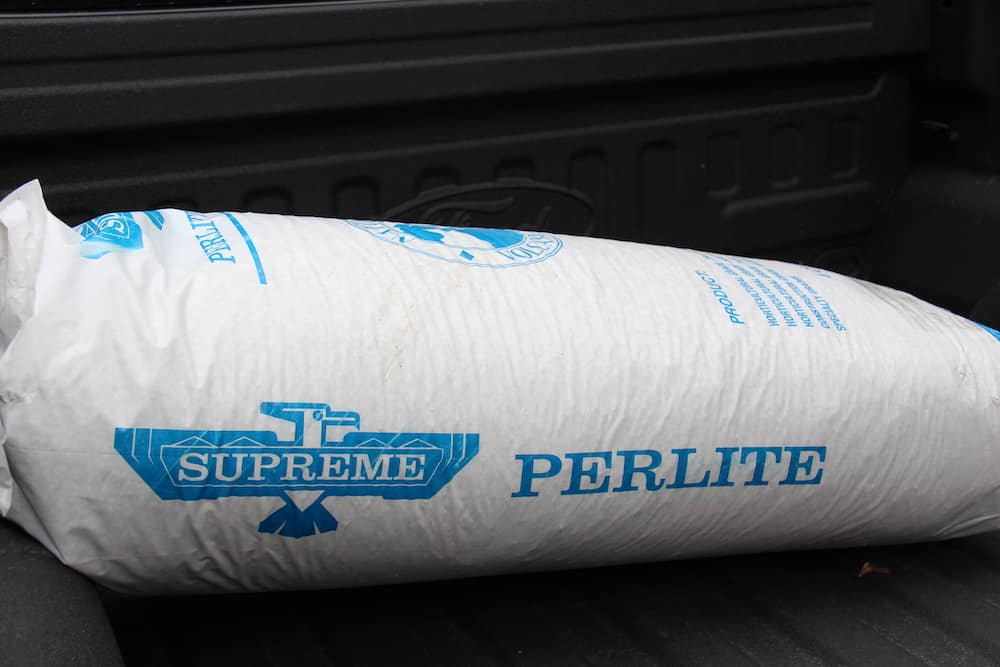
Processing Crude Rock into Horticultural Perlite
Naturally occurring perlite rock is first mined and then crushed into small pieces. The crushed rock is dried, ground, and screened into different sizes before being shipped off for processing. These bits of glass are then heated in an industrial oven at the expansion plant to create the white balls of processed perlite we see in our potting mix.
Most expansion plants are fuelled by natural gas (EPA). Heat is applied in industrial “poppers” until the trapped moisture vaporizes explosively.
“Perlite is a generic term for a naturally occurring siliceous volcanic rock, grey to black in color. The crude perlite rock contains 2 to 6% combined water. During processing, the rock is rapidly heated to about 900 degrees Celsius causing the water to vaporize and creating countless tiny bubbles in the heat-softened glassy particles. The resulting material is the familiar white perlite, extremely light in weight, since it has expanded 4 to 20 times its original volume.”
Studies Of Fluoride Absorption By Plants Grown In Perlite, by George J. Doss, Leigh E. St. John Jr., and Donald J. Lisk, Departments of Vegetable Crop and Food Science, Pesticide Residue Laboratory, New York State College of Agriculture and Life Sciences, Cornell University.
Perlite is simply bits of naturally occurring glass that have been heated up until they pop like popcorn. Perlite is sterile and inert, making it a very useful medium for growing plants. It doesn’t contain fertilizer for the plants, but it also generally doesn’t contain chemicals beyond its own atomic structure. It’s ROCK POPCORN!
What Does Perlite Look Like?
Small chunks of perlite are “popped” using heat to create a light, air-filled medium. Bits of perlite look like little bits of styrofoam. So the little white bits in potting mix….yup! That’s perlite.
Perlite looks quite a bit like popcorn or like little styrofoam balls. Like popcorn, Perlite is white in color thanks to light reflecting off tiny bubbles on the surface of its particles. It is full of tiny air compartments, giving it a low density. It remains puffy but can become a stained yellow color over time.
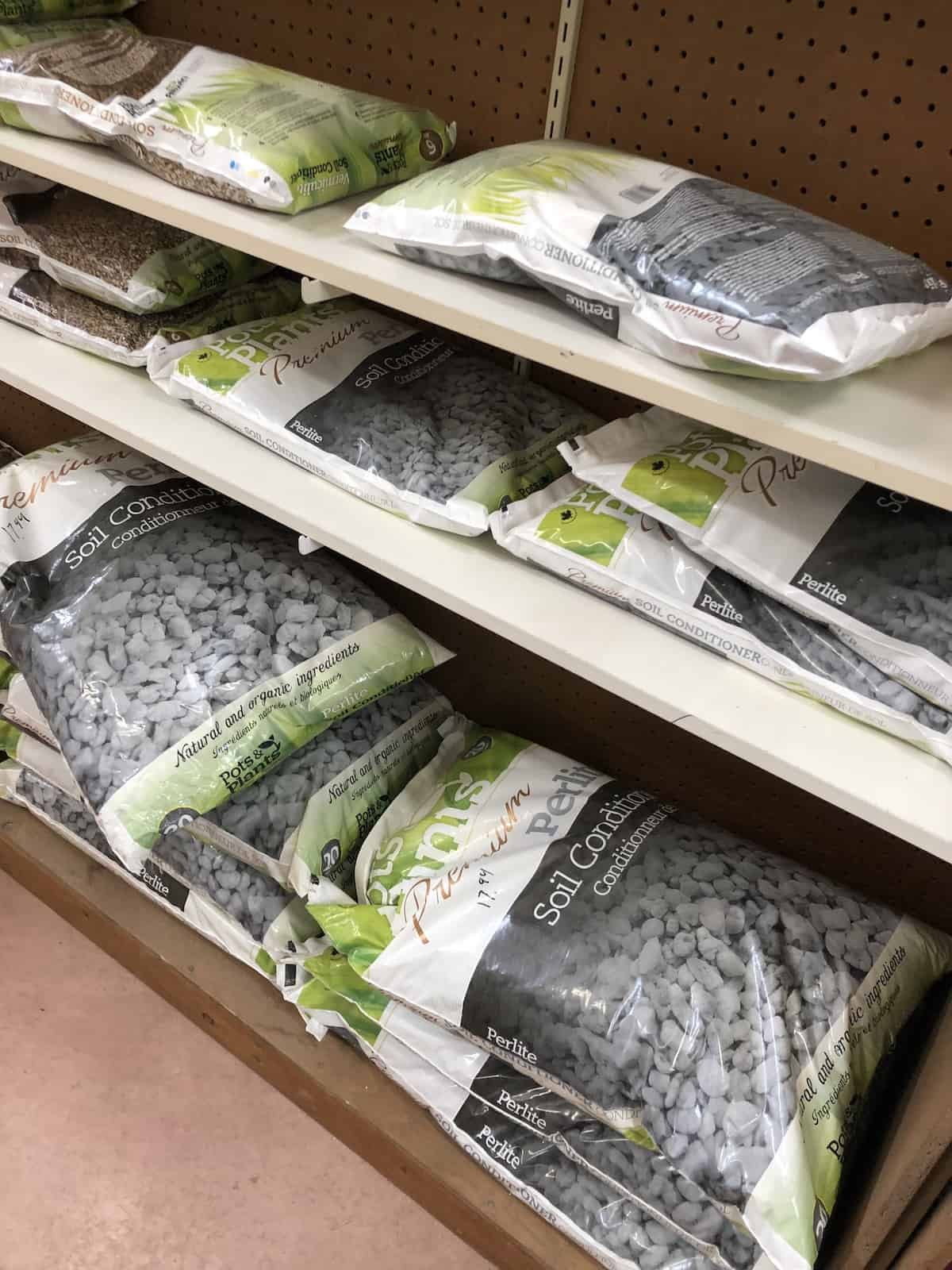
Locations of major perlite deposits
Perlite comes from bedrock deposits of obsidian that have experienced chemical weathering from water infiltration. There are perlite deposits all over the world. China, Greece, and Turkey are all major perlite-producing countries. The USA is also a major producer.
Here are some major Perlite deposits being mined in the USA:
- Socorro Mine, Dicalite Management Group , Socorro, New Mexico
- El Grande Mine, Dicalite Management Group, Taos, New Mexico
- No Agua Mine, Imerys Perlite USA (Harborlite), Taos, New Mexico
- Imerys Superior, Imerys Perlite USA (Harborlite), Vicksburg, Arizona
- Popcorn Mine, EP Minerals, Churchill County, Nevada
- Wilkin Mine, Wilkin Mining & Trucking, Lincoln, Nevada
- CS Pozzolan-Perlite, Sunrise Resources, Esmeralda County, Nevada
- Hess Mine, Hess Perlite, Oneida, Idaho
- Tucker Hill Mine, Cornerstone Industrial Minerals, Lakeview, Oregon
After it is mined at locations like those listed above, raw perlite is heated and “popped” in expansion plants. There are expansion plants all over the USA. There is a list of perlite expansion plants in the USA in this document by USGS.
“Perlite was expanded at 59 plants in 27 States.”
Perlite of 2016 – Minerals Yearbook, USGS
Perlite is packaged after expansion and shipped off for sale.
Uses for perlite
Perlite is used in building construction materials (like insulation, ceiling tiles, and lightweight concrete), potting soil, liquid filters, and other industrial applications.
“In primary usage, perlite competes with other lightweight construction materials, like pumice, exfoliated vermiculite and expanded clay and shale. Each of these lightweight materials has its pros and cons, depending on the application, and each has retained certain niche markets.”
Mineral Resource of the Month: Perlite, Earth Magazine
Orchids can be grown entirely in a coarse perlite medium. It’s also common in hydroponics and for plant propagation. Some cold-climate gardeners use straight perlite to store dahlias and other tender bulbs over the winter.
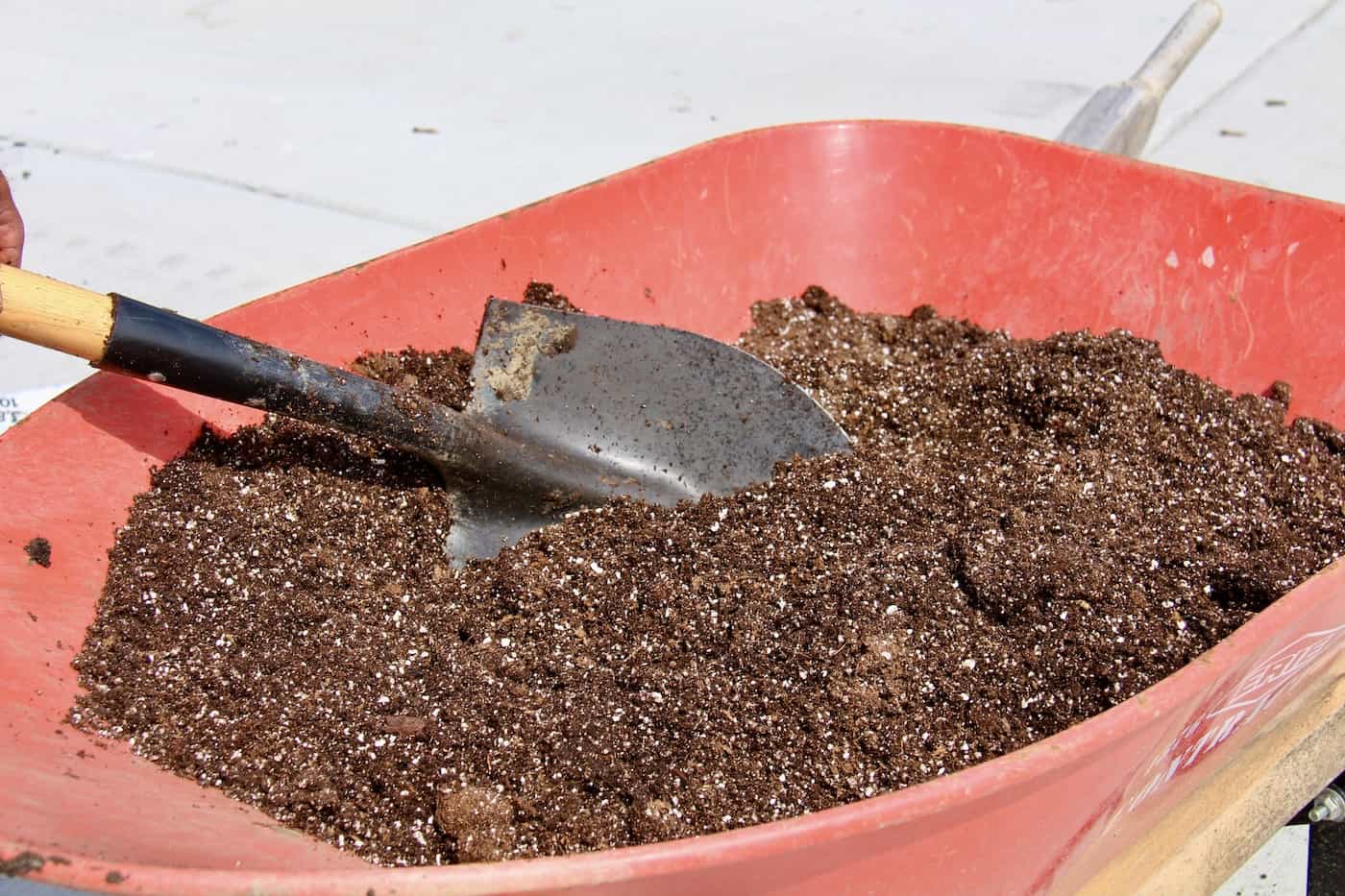
Perlite in potting soil
So what does perlite do for the potting mix? Perlite adds porosity to potting soil. The tiny air compartments in this “rock foam” hold air for plant roots and allow water to drain freely out of the soil. These two very important factors prevent root rot and keep terrestrial plants from “drowning.”
Does perlite retain water? Perlite does hold a bit of water on its surface, but one of its key benefits is that it allows water to drain out of the soil. The well-draining characteristics of perlite mean it retains a good deal of air in the large voids instead of retaining only water. The trapped air lightens the potting mix considerably, as well as provides valuable oxygen for plant roots.
The text Mineral Nutrition of Plants gives a nice summary list of the main characteristics of perlite as a solid media for plant growth:
“Lightweight; absorbs two to six times its weight in water, but has little water holding capacity; neutral pH; chemically inert; produces an irritating fine dust”
Mineral Nutrition of Plants: Principles and Perspectives, by Emanuel Epstein and Arnold J. Bloom
As noted above, there are both pros and cons to using perlite in potting soil. It’s great for root aeration and drainage. It’s also long-lasting, inert, and fairly inexpensive. Perlite has a neutral pH and doesn’t affect the overall pH of the potting mix. But, it also contains no plant food, doesn’t hold much water, is dusty, and can be lost to surface water and winds. Most potting mixes contain about 10-20% perlite.
Here is an explanation of the importance of oxygen in soil from the same text as above:
“Soils become hypoxic (oxygen deficient) within hours after flooding because oxygen consumption belowground is rapid – plant roots typically respire at rates faster than shoots (Amthor 1989), and soil microbes respire faster still (Paul and Clark 1996) – and oxygen diffusion from the vast reservoir aboveground through water-filled soil pores is 10,000 times slower than through air-filled ones.”
Mineral Nutrition of Plants: Principles and Perspectives, by Emanuel Epstein and Arnold J. Bloom
Is perlite a fertilizer?
Perlite is not a plant fertilizer. Processed horticultural perlite is chemically inert and has a neutral pH. As a soil additive, perlite is classed as an aggregate rather than a fertilizer. Perlite is a rock product and does not decompose at any noticeable rate.
Perlite is formed from obsidian rock and water and is made up mainly of silica. The silicon content of the perlite is generally not accessible by plant roots as perlite is a long-lasting rock product. Even if it were more soluble from the perlite media, silicone is not a key nutrient for most plants.
“Since silicon is not considered an essential element, most plants will grow normally without it.”
Role of Silicon in Plant Culture, by Ed Bloodnick, PT Horticulture.
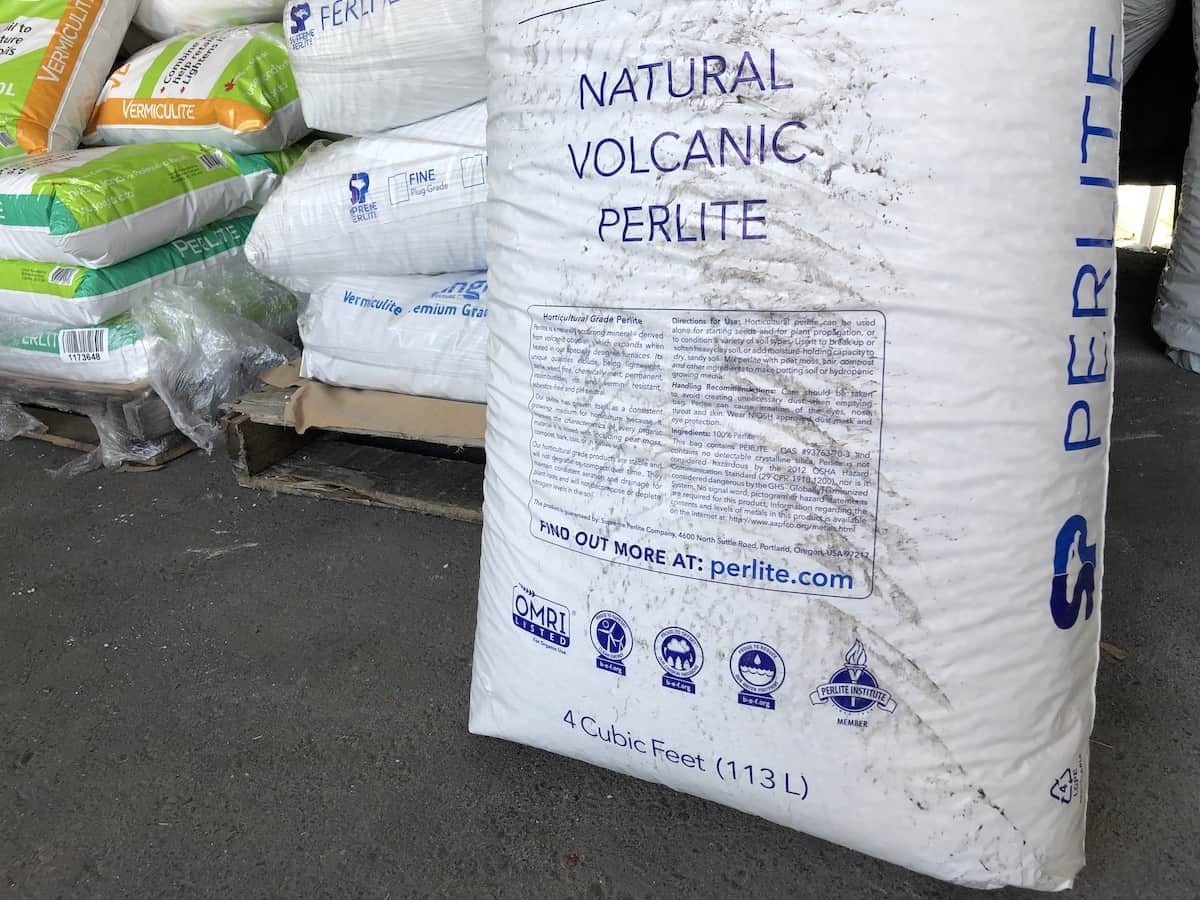
Is perlite organic?
While pure perlite is a mined glass (and therefore “inorganic”), perlite is allowed in organic gardening because it is a naturally occurring non-synthetic soil amendment. If a synthetic chemical fertilizer has been added to the perlite product (which does sometimes occur), then it would not be considered allowed in organic growing.
Perlite is not chemically organic because it is made out of rock, not formerly living carbon-based matter. However, uncontaminated perlite rock is generally OMRI-listed as allowed in organic growing as a naturally occurring substance. Look for the OMRI label on the product packaging.
What is the difference between perlite and vermiculite?
Here are the key differences between perlite and vermiculite:
- Perlite is a volcanic glass, while vermiculite is a crystalline mineral
- Perlite breaks into chunks, while vermiculite breaks into flakes
- Perlite doesn’t hold much water, but vermiculite does hold water
- Perlite remains firm when wet, while vermiculite is more spongy
- Pure perlite is bright white, while vermiculite is brown in color
Both perlite and vermiculite can be processed into an expanded puffed form by heating the crushed rock. Both are chemically inert and fire-resistant. Both are produced in large quantities in the USA.
Both perlite and vermiculite can be formed as their parent rocks experience chemical weathering from water in the environment. The water intrusion also provides for the internal moisture needed to create steam expansion during processing.
Here is a little more about vermiculite from the USGS:
“Raw vermiculite is similar in appearance to mica, contains water molecules within its internal structure, and ranges in color from black to various shades of brown to yellow. When vermiculite flakes are heated rapidly to a temperature of 900 °C or higher, the intermolecular water flashes into steam, and the flakes expand into accordion-like particles, which are gold or bronze in color.”
Vermiculite – 2016 Minerals Yearbook, USGS
Which is better? Perlite or vermiculite?
Gardening experts are constantly arguing over whether vermiculite or perlite is the better potting mix aggregate. See the most common arguments below:
“I choose perlite—those cute little white balls that look like Styrofoam—mostly because it drains faster and better than vermiculite. If I gardened in a dry climate, I might choose spongy vermiculite; but in rainy Pennsylvania, I want something that gives up its water more easily.”
– Mike McGrath, Former Editor of Organic Gardening, Raised Bed Review Plus Perlite Vs. Vermiculite
“I personally don’t like or use perlite, and here’s why. It is hard as a rock, rather coarse and gritty, and I don’t like the feel of it in the soil mix. It doesn’t hold moisture like vermiculite. It floats to the top of the soil mix as you water your garden, and because it’s white, it looks rather unsightly and unnatural.”
– Mel Bartholomew, Founder of Square Foot Gardening, All New Square Foot Gardening (3rd Edition, 2018)
Some gardeners prefer to use vermiculite rather than perlite. Others like perlite better. It’s a matter of preference and matching your potting soil mix to your specific environment and planting requirements.
Note – Some gardeners worry about vermiculite being potentially contaminated with asbestos, as there was a contamination issue with vermiculite insulation from Montana several decades ago. If you do choose to use Vermiculite, make sure to pick a brand that certifies its product as pure and free from asbestos.
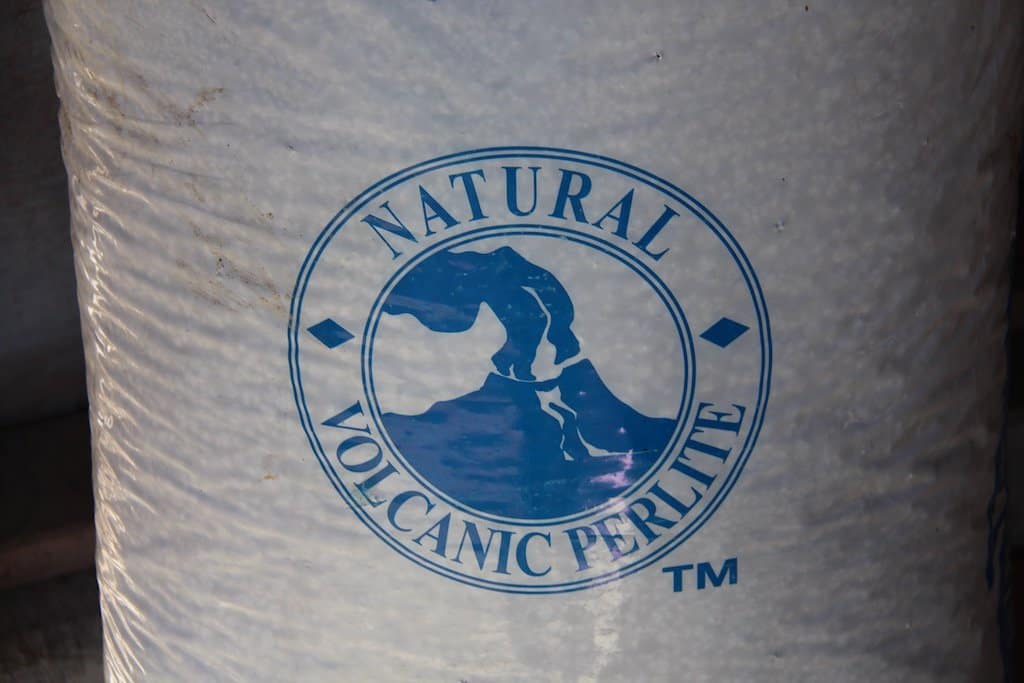
How to use perlite in the potting mix
Perlite is generally mixed into peat moss and/or coconut coir to create the potting mix. The perlite aggregate is good for lowering the density of potting mix, keeping it light and fluffy. This characteristic lets the roots of plants access adequate oxygen and water.
So, what plants really need perlite? Perlite is most needed in the soil mix of plants grown in containers. Plants that naturally grow in dry areas will benefit most from the addition of perlite to their potting mix.
Perlite is safe for organic gardens, as it is chemically inert. It will help to hold air in the soil, keeping the plants from suffocating.
Perlite safety — Follow usage instructions
Always follow the safety precautions and usage instructions on the product packaging. Check with national and regional safety regulators for further safety considerations such as daily exposure limits.
Wear a dust mask when working with perlite. There is no reason to put your lungs in danger by inhaling the particulate matter from perlite. Goggles and a silica air filter mask may be recommended. Read and follow all applicable instructions and precautions.
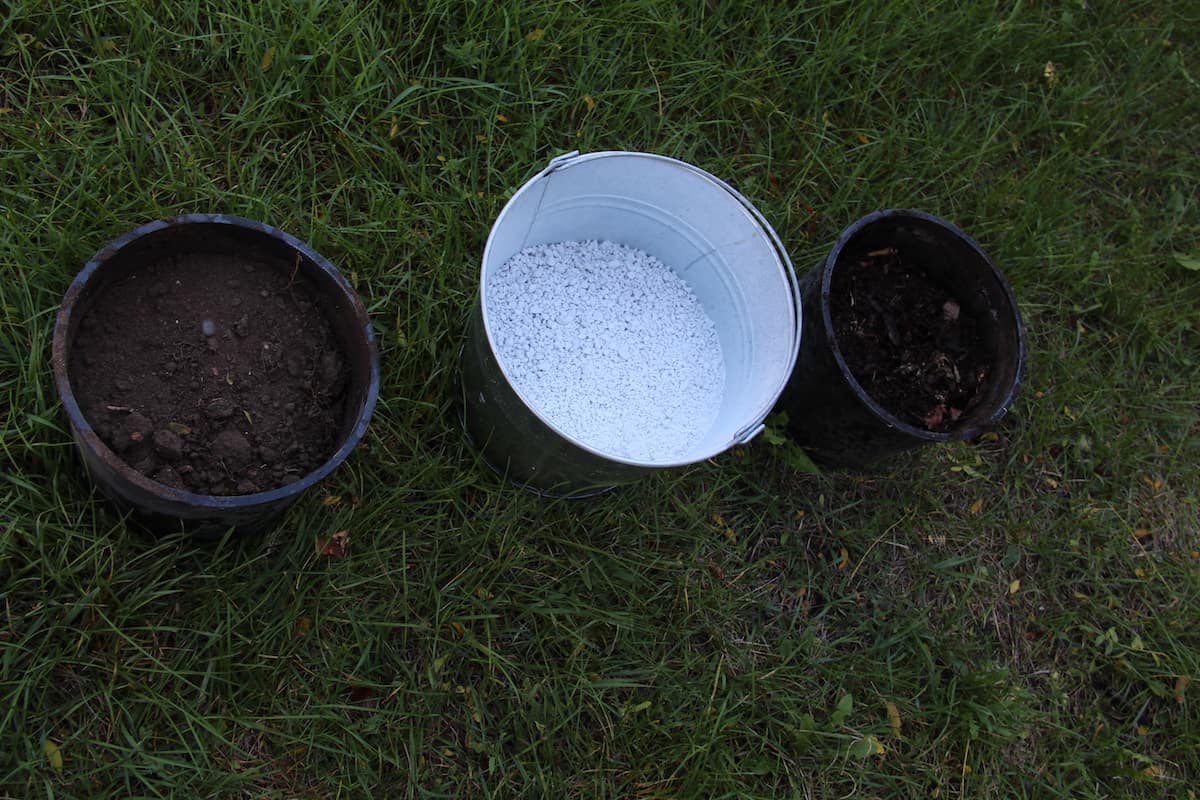
How much perlite to add to potting soil
Potting soil products generally contain 10-20% perlite. To lighten up your container plants, it’s perfectly fine to add more perlite to the potting soil so that the total perlite content is more like one-third of the volume of the pot.
Plants that enjoy dry soil can handle a high percentage of perlite in the potting mix. Perlite is good for succulents and can easily make up half of the potting mix. Any desert-loving plant can be a good candidate for a potting mix that contains perlite.
“Usage rates by volume vary from 5% to 40% for potting mixes, and as high as 75% to 100% in green roofs and hydroponics applications.”
Perlite for Horticulture, The Perlite Institute
Finer grades of perlite can be used in outdoor garden beds. Perlite is generally applied with compost or other soil amendments and worked into the soil. A thin layer of about an inch should be plenty.
Perlite can also be used in lawn soil. It is most effectively applied before planting grass seed. On an existing lawn, it can be spread immediately after core aeration. Give it a bit of a rake to help it work down into the open core holes left by the aerator machine.
What about using only perlite? Can you grow plants in just perlite? Yes, it’s completely possible to grow plants in just perlite! In fact, it’s common for indoor hydroponics growing systems to use 100% perlite as the growing media. Orchids and cuttings can also be grown in straight perlite.
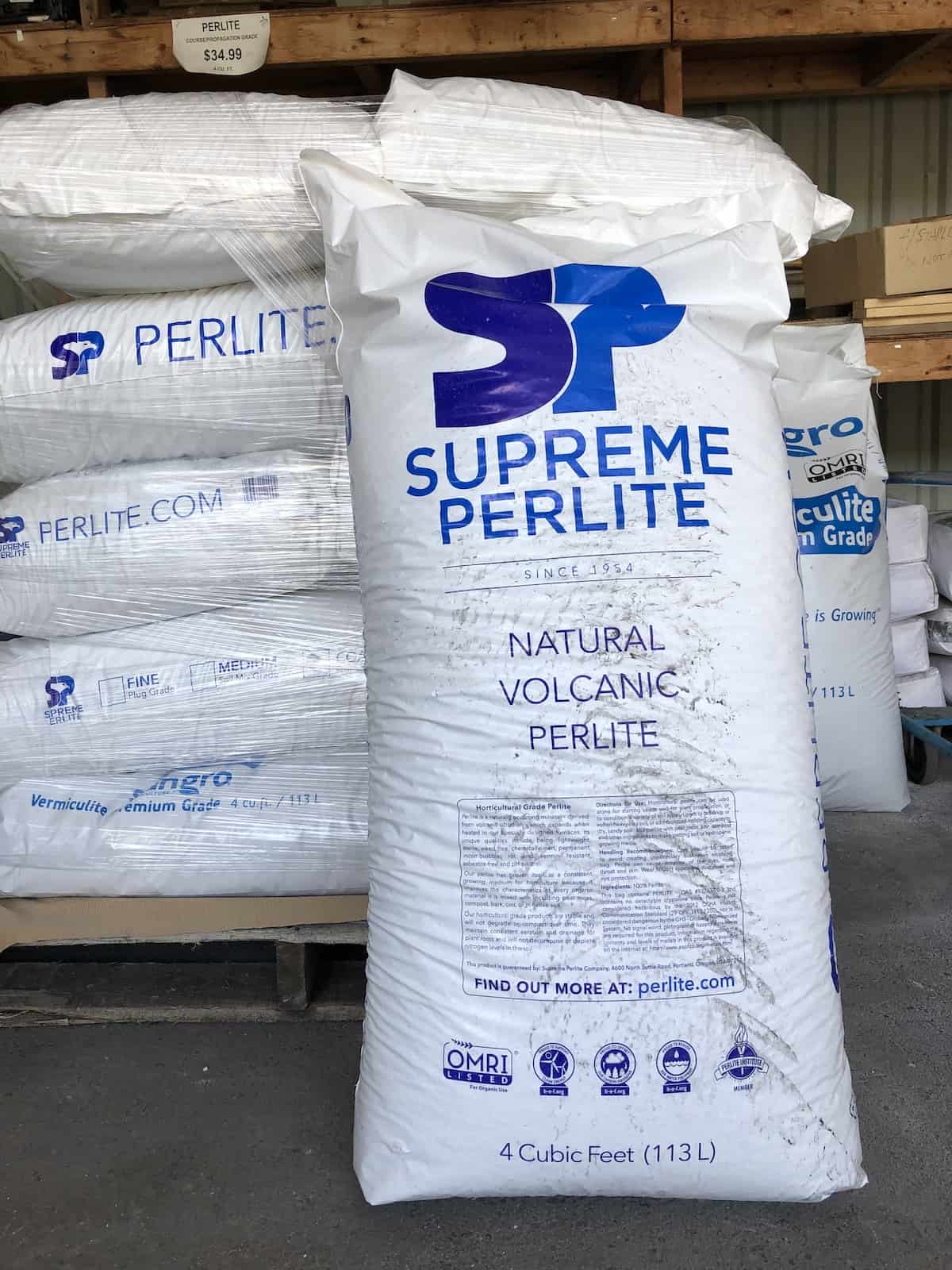
Buying perlite for your garden soil
So, how much does perlite cost? In small bags, perlite costs about $1 USD per quart. In the larger consumer bags, it costs about $10 USD per cubic foot (30 quarts). Perlite is often sold in small 8-quart bags, larger 2-cubic-foot bags, and giant 4-cubic-foot bags (see photo above).
Bulk horticultural perlite costs about $500 USD per metric ton.
Re-using perlite (perlite doesn’t expire!)
Perlite does not “expire” because it is simply a rock filled with air pockets. Rocks don’t expire like the food in our fridges because they are not made of living cells. Lumps of perlite can be considered air-filled pebbles, similar to pumice stone. It is chemically inert, doesn’t react, and doesn’t degrade with time. Like any substance, however, perlite can become contaminated with other substances from the surrounding environment and as such should be used and stored in accordance with the manufacturer’s directions.
Perlite can and should be re-used. The perlite can be cleaned and sterilized for use in future container gardens or can be added to homemade compost to give a “breath of fresh air” to your outdoor garden beds. There is no need to throw perlite out into the trash. If perlite were to be sent for recycling, it could be deposited in the “crushable” section of the recycling center (with concrete and other aggregate-containing inert building materials).


